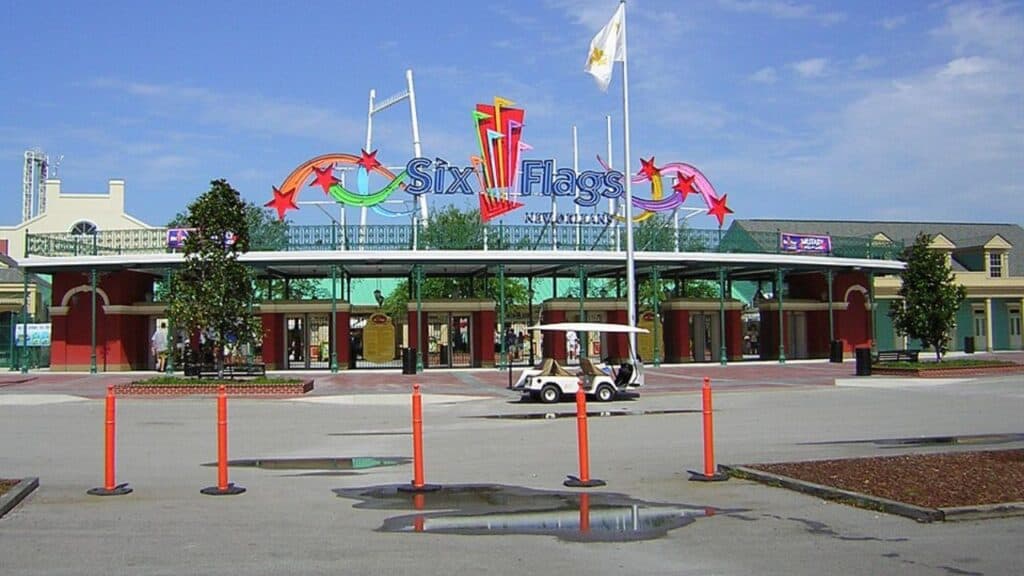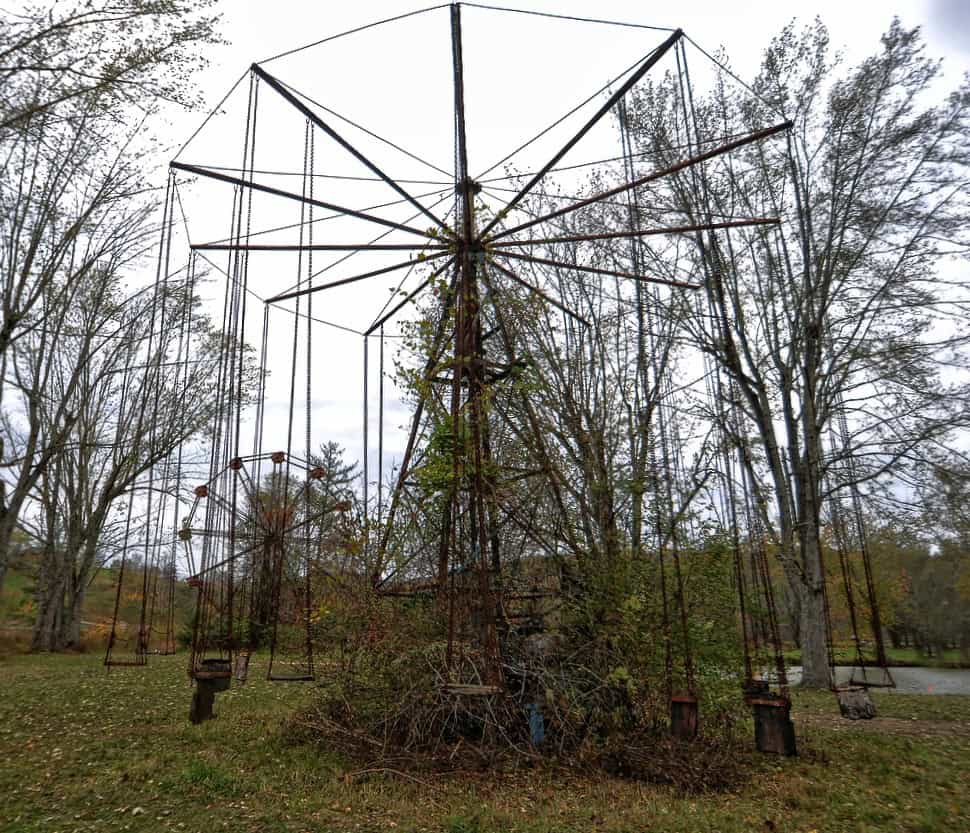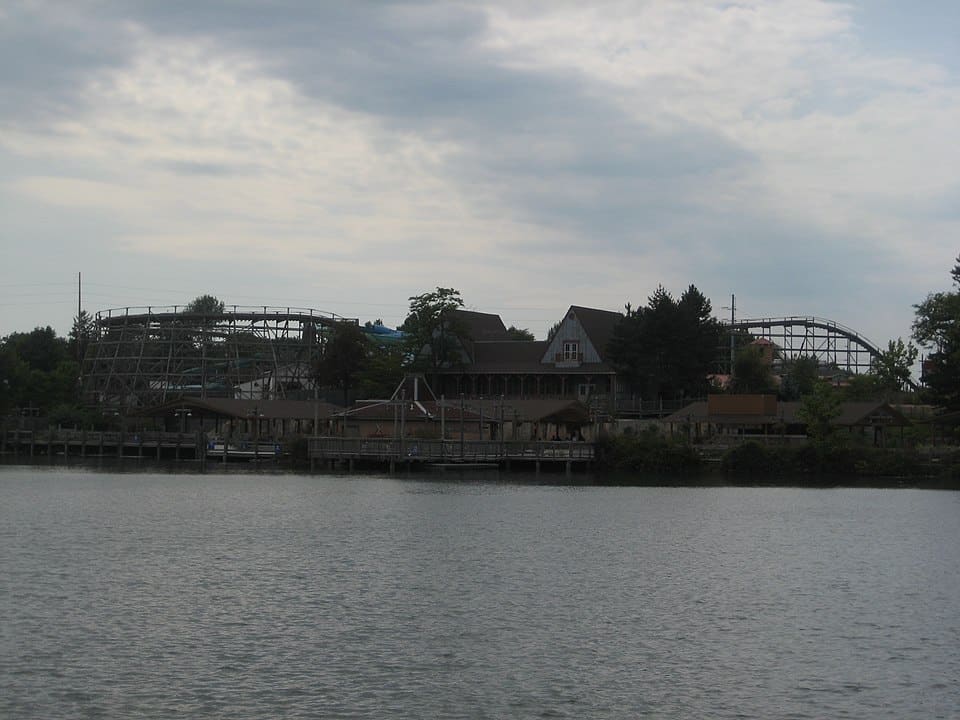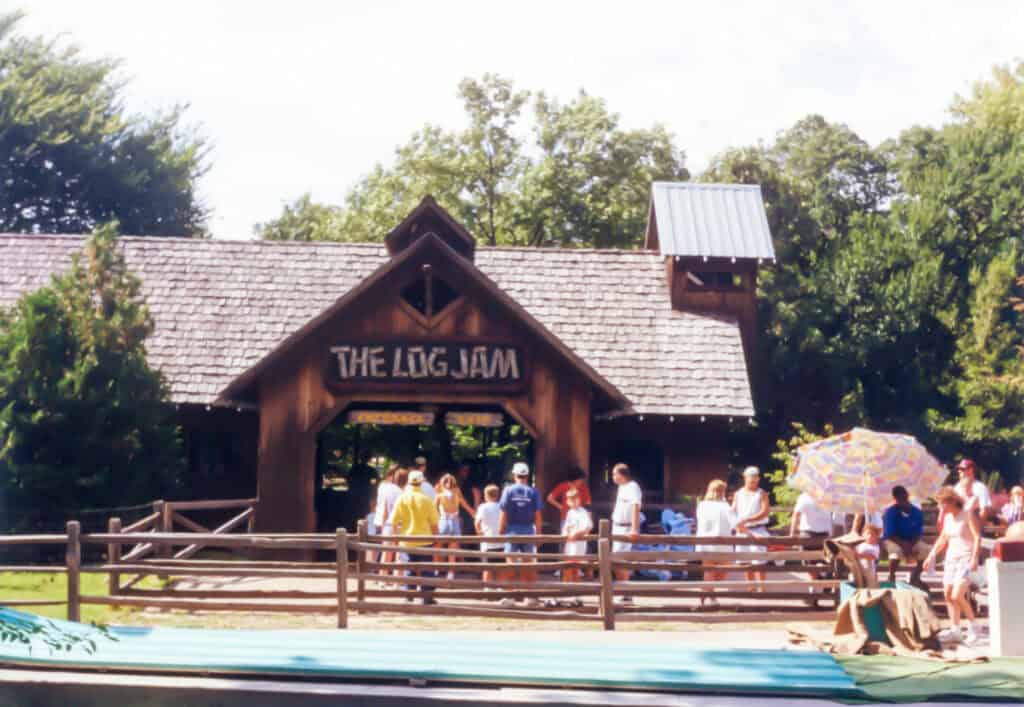We may earn money or products from the companies mentioned in this post. This means if you click on the link and purchase the item, I will receive a small commission at no extra cost to you ... you're just helping re-supply our family's travel fund.

Across the country, faded midway lights and rusted coasters hold the echo of parades, payrolls, and promises that fell apart. Some parks went under after disasters; others collapsed under lawsuits, scandals, or slow economic drift. What remains is a strange archive: flooded ferris wheels, carousel horses swallowed by vines, ticket booths full of dust. Here’s the thing—these places say as much about policy, weather, and money as they do about thrills, and that’s why their silence feels so heavy.
Six Flags New Orleans, Louisiana

When Katrina’s surge hit in Aug. 2005, the park drowned, then sat for years in brackish still water. Salt and silt ate steel, gators took the lagoons, and the skyline of coasters became a storm marker visible from the highway. Redevelopment plans surfaced, stalled, and resurfaced, a cycle that turned the site into an accidental memorial. The lesson lands hard: infrastructure, insurance, and climate aren’t abstract when a whole park rusts in public view.
Lake Shawnee Amusement Park, West Virginia

A lakeside picnic ground grew into a small park where accidents and whispered history fused into a legend of bad ground. Archaeologists later found Indigenous graves on the site, confirming layers older than the ticket stand. Rides were pulled out, but a few skeletal frames remained, surrounded by quiet water and rumors that never retired. Seasonal ghost tours keep the gates cracked, turning cautionary folklore into local economy, grief threaded with livelihood.
Action Park, New Jersey

In the ’80s and ’90s, this mountain park became shorthand for lax oversight and bravado. Homemade-looking rides, minimal training, and a culture of dare turned the place into a statewide punchline with a grim footnote. Injuries stacked up, fatalities occurred, and the lawsuits finally outpaced the thrill. The hill later reopened under new operators and safety norms, but the abandoned era’s photos linger: empty alpine slides, closed pools, and a lesson written in liability.
Dogpatch USA, Arkansas

Built on Li’l Abner charm and Ozark scenery, the park rode early curiosity, then hit bankruptcy after stalled expansions and a changing tourist map. When the gates shut, wooden buildings sagged into the hills and trout pools went still. Ownership shuffled, plans sputtered, and weeds took the midway. What this really means is a rural dream stranded between old roadside Americana and modern destination resorts, with silence doing the accounting in the end.
Geauga Lake, Ohio

What began as a lakeside picnic ground grew into a regional giant, then fractured under corporate trades and competing visions. Coasters moved, brands changed, and closures rolled in stages until the property felt like a dismantled catalog. Parking lots sat empty, ride pads turned to bare concrete, and the lake kept lapping at the edge as if nothing had happened. It’s a case study in consolidation, where spreadsheets outlasted wooden boards.
Chippewa Lake Park, Ohio

Closed after 1978, the park didn’t vanish; it dissolved slowly, which is somehow harsher. The coaster bowed under vines, the ballroom fell to storms, and a surprise fire erased what nostalgia had managed to protect. Locals kept visiting, not for rides, but to watch the forest take back the midway. Decades of trespass photos turned the place into a folk gallery of decay, each season adding a new frame to a vanishing reel.
Joyland, Kansas

For generations, this Wichita park anchored school trips and summer jobs, then shuttered in 2004 after safety issues and financial strain. What followed was a tug-of-war between preservation hopes and vandalism. The wooden coaster loomed like a rib cage, a neon clown sign flickered into legend, and restoration campaigns fought water, weather, and time. Fires and thefts thinned the remains, leaving a cautionary diagram of what community will can and can’t hold.
Lincoln Park, Massachusetts

A fatal coaster accident in 1986 pierced the park’s small-town armor, and the business never truly recovered. Attendance slid, maintenance costs stacked, and by the early ’90s the gates were done. For years the derelict coaster stood over Dartmouth like a timber warning, before storms and demolition cleared the skyline. The fairground charm didn’t disappear; it hardened into memory and debate about when nostalgia protects and when it simply hides risk.